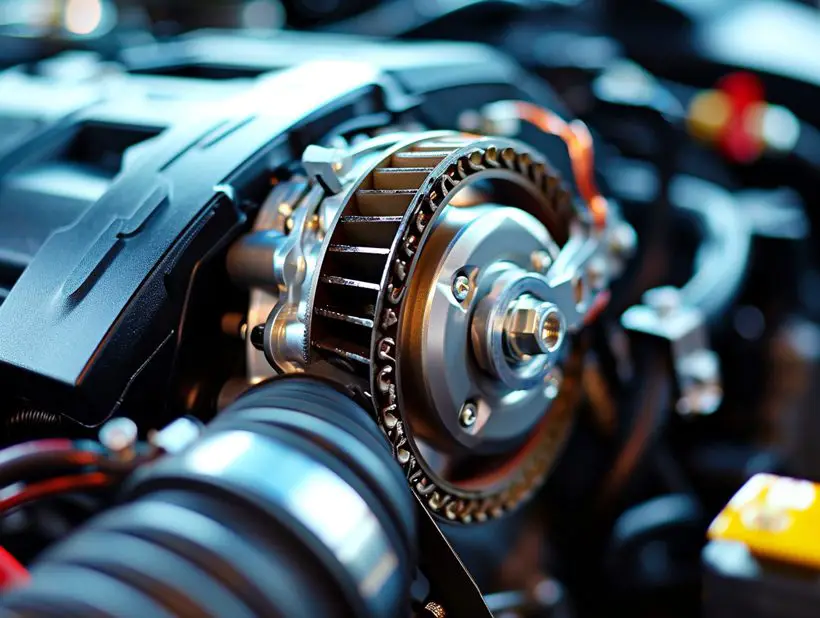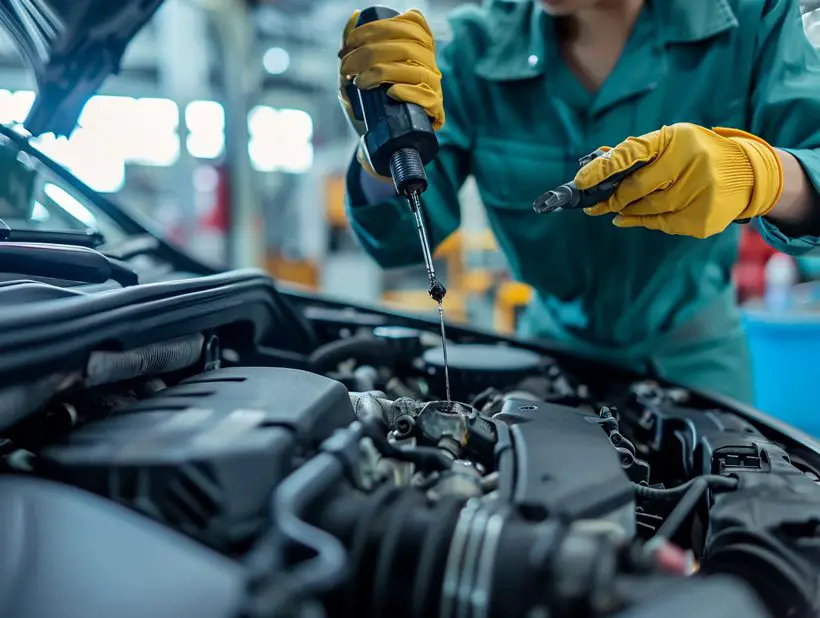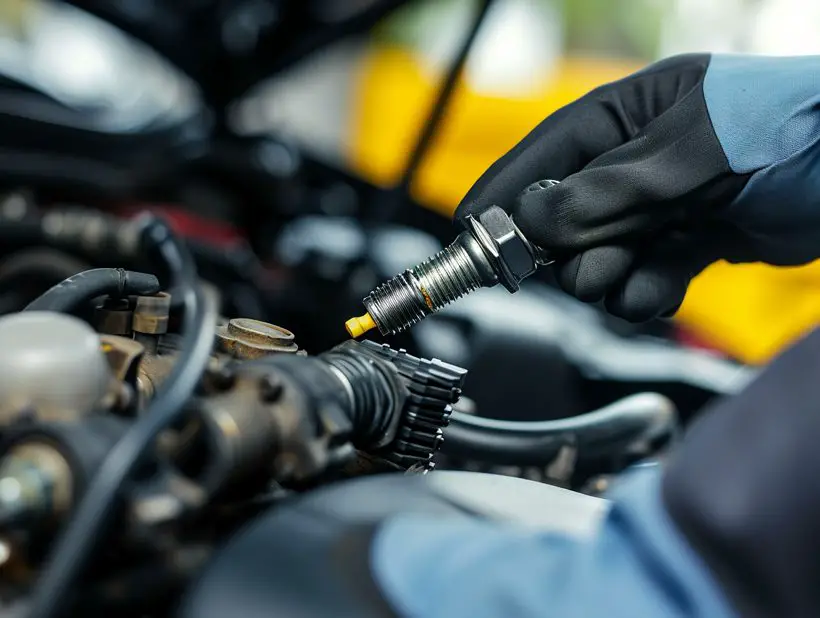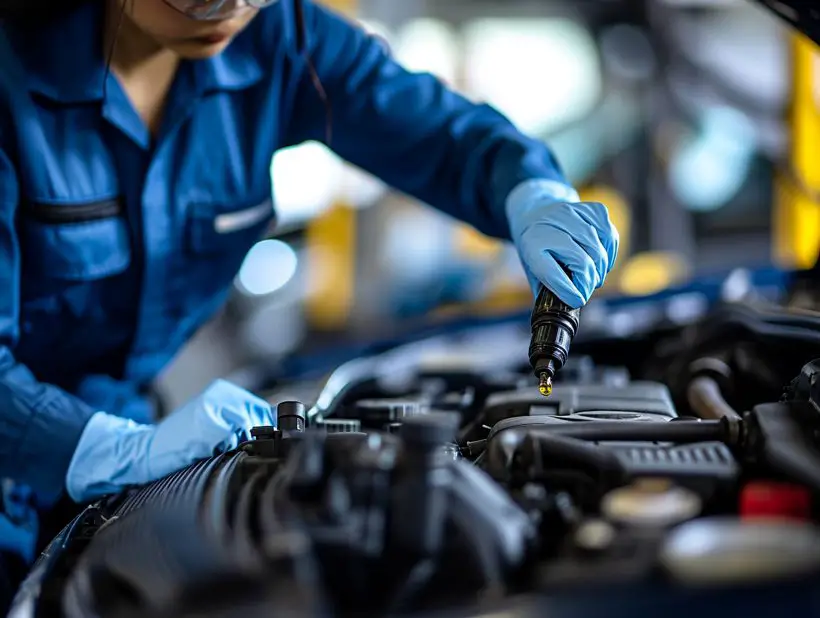Ever found yourselves pressing down on the gas pedal only to feel your car sluggishly crawl up a hill? It’s a clear sign your vehicle’s not performing at its peak. We’ve all been there, and it’s both frustrating and concerning.
Understanding what’s sapping your car’s strength can be tricky, but we’re here to break it down. Whether it’s a fuel system issue or a problematic exhaust, we’ll help you pinpoint the culprit behind that weak acceleration.
Stay tuned as we dive into common causes and fixes for a car losing power on inclines. It’s time to restore your ride’s vigor and ensure you’re never left struggling on those uphill climbs again.
Common Causes of Weak Acceleration Up Hills
When you’re driving and find that your power fades as you climb, it can be both puzzling and disconcerting. Let’s explore the typical reasons why your car might lack that necessary surge of energy when it’s most needed.
Fuel System Complications:
The fuel system is vital for delivering the right mix of air and fuel to your engine. Complications here can severely impact your car’s ability to accelerate:
- Clogged fuel filter: Impeding fuel flow, leading to reduced engine power.
- Faulty fuel pump: Inadequate fuel pressure can’t meet the demands of the engine.
- Bad fuel injectors: Poor spray patterns or blockages compromise the fuel and air mixture.

Exhaust Restrictions:
An obstruction in the exhaust system can cause backpressure, forcing the engine to work harder:
- Catalytic converter failure: Restricts exhaust flow, diminishing engine power.
- Crushed or bent exhaust pipes: Reduce the expulsion of exhaust gases, leading to decreased performance.
Ignition Issues:
A strong and consistent spark is required to ignite the fuel-air mixture. Weak ignition leads to incomplete combustion:
- Worn spark plugs: Result in a weak spark, undermining engine efficiency.
- Defective ignition coils: Fail to provide the necessary voltage for a strong spark.
Transmission Troubles:
The transmission is responsible for transferring power from the engine to the wheels. Problems here can present as a loss of power during acceleration:
- Slipping transmission: The car may rev without a corresponding increase in speed.
- Delayed gear engagement: Hesitation before the transmission shifts gears.
Sensor Malfunctions:
Modern cars rely heavily on sensors to monitor and adjust engine performance. Malfunctions can throw off engine timing and power:
- Faulty mass air flow (MAF) sensor: Misreads air intake, leading to poor engine performance.
- Degraded oxygen (O2) sensors: Incorrect fuel-to-air ratio adjustments affect combustion efficiency.
Understanding these common issues can lead to a more focused and effective troubleshooting process, getting you back to a smooth and powerful ride. Our journey to pinpoint the exact cause continues. Let’s dive deeper into how each of these aspects can be identified and resolved to restore your car’s vitality on those challenging inclines.
1. Fuel System Issues
When we’re tackling the dilemma of our car losing power on hills, we need to turn our attention to the fuel system, a critical component for smooth acceleration. Let’s zero in on specific issues that can be at the heart of the problem.

Clogged Fuel Filter
A clogged fuel filter is a common culprit. It’s responsible for keeping contaminants out of the fuel system, but over time it can become obstructed, restricting fuel flow to the engine. Here’s what to look out for:
- Engine sputters at high speeds
- Reduced engine power
- Trouble starting the engine
If we suspect a clogged fuel filter, it’s usually a straightforward fix‚Äîreplacing the filter can restore the necessary flow of fuel.
Faulty Fuel Pump
Another issue we come across is a malfunctioning fuel pump. This essential part ensures a consistent supply of fuel to the engine but can wear out or break.
Symptoms of pump problems include:
- Whining noise from the fuel tank
- Difficulty starting the car
- Stalling, especially under load
It’s crucial to have this assessed and replaced if needed to maintain proper fuel pressure and vehicle performance.
Bad Fuel Injectors
Bad fuel injectors can disrupt the delicate balance of fuel and air in our engine, leading to weak acceleration and other issues:
- Poor idle
- Increased fuel consumption
- Misfires or an engine that runs rough
Keeping the injectors clean and functioning can often preempt these issues. A professional fuel system cleaning or a direct injector replacement can remedy these problems effectively.
It’s worth mentioning that these are just a few components of the fuel system that we need to keep in check. Regular maintenance is the key to negating these issues before they escalate. Remember, the symptoms can vary and sometimes, they may present themselves subtly. Monitoring our vehicle’s behavior and performance closely enables us to catch these signs early and take action.
2. Exhaust Issues
When tackling weak acceleration, especially on hills, it’s crucial to consider exhaust system complications. The exhaust system’s role in expelling gases might seem simple, yet its impact on engine performance is substantial.
Blockages in the Exhaust System
One common issue is a blocked or restricted exhaust. A clog can occur due to a malfunctioning catalytic converter or debris accumulation. If you’ve noticed a decrease in fuel efficiency or a change in engine sound, these could be indicative of an exhaust obstruction. Here’s what to watch for:
- Decreased engine power
- A noticeable increase in engine noise
- Reduced fuel economy
- The smell of sulfur or rotten eggs from the exhaust
Faulty Oxygen Sensors
A less obvious but equally important aspect is the function of oxygen sensors. These sensors measure the oxygen level in the exhaust and inform the engine control unit to adjust the fuel mixture accordingly. If an oxygen sensor fails, it can lead to:
- Improper air-fuel mixture
- Increased emissions
- Engine misfires

Exhaust Leaks
Another culprit affecting performance are exhaust leaks. An exhaust leak can result in lost backpressure which is critical for engine efficiency. Symptoms include:
- A loud exhaust note
- Rattling noises under the vehicle
- A hissing or tapping sound that’s more prominent during a cold start or acceleration
Regular exhaust system checks are vital to avoid these problems. Ensure to inspect for physical damage, listen for abnormal sounds, and be mindful of any unusual exhaust smells. Remember, a healthy exhaust system is key for maintaining optimal engine performance and ensuring your car can tackle those steep inclines without a hitch.
By keeping an eye out for these issues and performing timely maintenance, we can often rectify weak acceleration problems without the need for extensive repairs.
3. Ignition System Problems
When tackling weak acceleration issues, it’s crucial to consider the ignition system. This system’s primary role is to ignite the fuel-air mixture inside the engine’s cylinders. If there’s a fault here, our cars might struggle to pick up speed, especially uphill, where more power is required.
Spark Plugs and Wires
The usual suspects in ignition system troubles are the spark plugs and wires. Over time, spark plugs can become fouled, or their electrodes can wear down, leading to an incomplete burn of fuel. Similarly, worn or damaged spark wires can result in a weak spark or no spark at all. Indicators of faulty spark plugs and wires include:
- Engine misfiring
- Increased fuel consumption
- Rough idle
- Difficulty starting the engine
To stave off these issues, we recommend checking and replacing spark plugs and wires according to the manufacturer’s suggested intervals.

Ignition Coil and Distributor
In addition to spark plugs and wires, the ignition coil and distributor are pivotal components of the ignition system. A failing ignition coil can lead to a weak spark, causing the engine to misfire under load. Problems with the distributor, although less common in modern vehicles with electronic ignition systems, can still occur and present similar symptoms. Always look out for:
- A stalling engine
- Lack of power during acceleration
- An engine light warning
Maintenance Is Key
Routine checks and maintenance of the ignition system are vital. We should:
- Inspect spark plugs and ignition wires regularly
- Test ignition coils for proper voltage
- Look out for wear or damage
By maintaining the ignition system, we’ll ensure our vehicles are less likely to experience power issues on uphill climbs. It also contributes to the overall health of our car’s engine, promoting longevity and reliability. Any signs of trouble with the ignition system warrant immediate attention to prevent further complications.
4. Transmission Trouble
When our vehicles struggle to maintain power on inclines, transmission issues could also be the culprit. Transmission trouble might not be the first thing that comes to mind, but it’s crucial in the proper delivery of power to the wheels. Here’s how transmission problems can affect our uphill drives:
- Delayed Gear Engagement: If there’s a noticeable delay when our gears shift while we’re climbing a slope, it’s a telltale sign of transmission woes.
- Slipping Gears: This occurs when the transmission unexpectedly slips out of gear while driving. It can feel like the car is suddenly losing power and can be quite alarming.
Should we notice these symptoms, it‚Äôs imperative to check the transmission fluid. Low levels of transmission fluid or fluid that’s burnt or dirty can lead to inadequate lubrication and cooling of the transmission, which may result in slippage or other issues.
| Fluid Condition | Potential Problem | Recommended Action |
|---|---|---|
| Low Fluid Levels | Increased friction and overheating | Check for leaks and refill |
| Burnt/Dirty Fluid | Degraded transmission performance | Flush and replace fluid |
Moreover, modern vehicles are equipped with sophisticated software that controls the timing and operation of gear shifts. If there‚Äôs a software malfunction, this syncing could be off, causing our cars to hesitate or lose power when we need it most. It’s essential to have the transmission system scanned for error codes by a certified technician who can perform an accurate diagnosis.
In manual transmissions, clutch wear is also a critical factor. A worn clutch can fail to engage properly, leading to a similar loss of power. Recognizing the importance of a responsive transmission can guide us in maintaining our vehicles more effectively, particularly before tackling challenging terrain like steep hills. Regular checks, as well as prompt responses to any signs of trouble, can keep us moving forward without those unsettling interruptions in power.
5. Engine Performance Concerns
When our vehicles struggle to maintain power on an incline, engine performance should be thoroughly examined. Signs of engine issues often manifest subtly, but they significantly impact our cars’ ability to perform when it’s most needed. Several components under this category deserve our attention:
- Air Filter: A dirty air filter can suffocate our engine, depriving it of the clean air required for optimal combustion. We should check our air filter regularly and replace it as part of routine maintenance.
- Exhaust System: If the catalytic converter or exhaust pipes are clogged, it’ll restrict the exhaust flow, causing the engine to run inefficiently. A telltale sign here is a decrease in fuel economy and a noticeable loss of power.
- Engine Sensors: Our car’s sensors, including the oxygen and mass airflow sensors, monitor and adjust the air-fuel mixture. Faulty sensors can send incorrect data, prompting the engine to run lean (too little fuel) or rich (too much fuel), which can inhibit performance.
- Timing Belt: The engine’s timing belt ensures valves open and close at proper intervals. A slipped or worn timing belt can result in a mistiming that affects engine performance.
Regular engine diagnostics can reveal less obvious issues that may not trigger a check engine light but can still cause power loss. For example, a compression test can reveal if our engine’s cylinders are losing pressure, which is crucial for maintaining horsepower.
| Issue | Symptom |
|---|---|
| Dirty Air Filter | Reduced airflow, poor fuel efficiency |
| Clogged Exhaust | Reduced power, sluggish response |
| Faulty Engine Sensors | Irregular idling, stalling |
| Worn Timing Belt | Misfiring, noticeable power decrease |
While each of these concerns can be addressed with regular maintenance and timely repairs, diagnosing the root cause is key. Our next steps should include a professional inspection if standard troubleshooting doesn’t resolve the problem. With a mix of vigilance and preventive care, our vehicles will be better equipped to tackle those uphill challenges.
Fixing Weak Acceleration Up Hills
When faced with the challenge of our car losing power on uphill roads, it’s crucial to address the underlying issues systematically. Let’s explore actionable steps to restore our vehicle’s performance.

Fuel System Repairs
Tackling problems within the fuel system often begins with some basic replacements:
- Replace the fuel filter: This is a relatively low-cost part that can have a high impact on fuel flow.
- Fix or replace a faulty fuel pump: Listen for a whining noise from the back of the car as a sign of pump issues.
- Check and clean fuel injectors: Poor spray patterns can impede engine performance.
Ignition System Maintenance
For the ignition system, routine checks and replacements can make a big difference:
- Install new spark plugs and wires if they show signs of wear or are due for replacement.
- Ignition coils should be tested and replaced if found to be malfunctioning.
- Distributor caps and rotors need checking and potentially replacing to ensure proper electrical current flow.
Transmission and Engine Adjustments
Keeping transmission fluid at the correct level and in good condition is essential. Here’s what we can assess and adjust:
- Transmission fluid: Make sure it’s filled to the right level with a clear, pinkish fluid‚Äînot a burnt smell or color.
- Clutch operation: For manual transmissions, a slipping clutch can be a culprit and may need adjustment or replacement.
- Software updates might be required to fix any glitches in the vehicle’s computer system.
Exhaust and Air Intake Considerations
Lastly, the air intake and exhaust systems should be free of blockages:
- Air filter replacement: A dirty air filter can starve the engine of needed air.
- Catalytic converter and exhaust: Check for clogs that could be restricting exhaust flow.
By addressing these elements, we’re taking proactive steps to combat weak acceleration and improve our hill-climbing capabilities. Regular maintenance and attention to these systems can prevent future power losses. If we’re not comfortable performing some of these tasks ourselves, it’s always best to consult with a professional mechanic who has the tools and expertise to diagnose and fix these issues properly. Remember, keeping our car in peak condition not only ensures better uphill performance but also extends the life of the vehicle.
Conclusion
We’ve armed you with the knowledge to tackle weak acceleration, especially when you’re powering up those hills. Remember, regular maintenance is key to keeping your car running smoothly and avoiding these issues. If you’ve tried all our tips and still find your car struggling, it’s time to seek professional help. Trust us, with the right care, your vehicle will thank you with performance that’s as strong and reliable as ever. Stay vigilant and keep your car in top shape ‚Äì it’ll ensure a smooth ride, wherever the road takes you.
